Bocas del Toro Frog Blog Guest Post
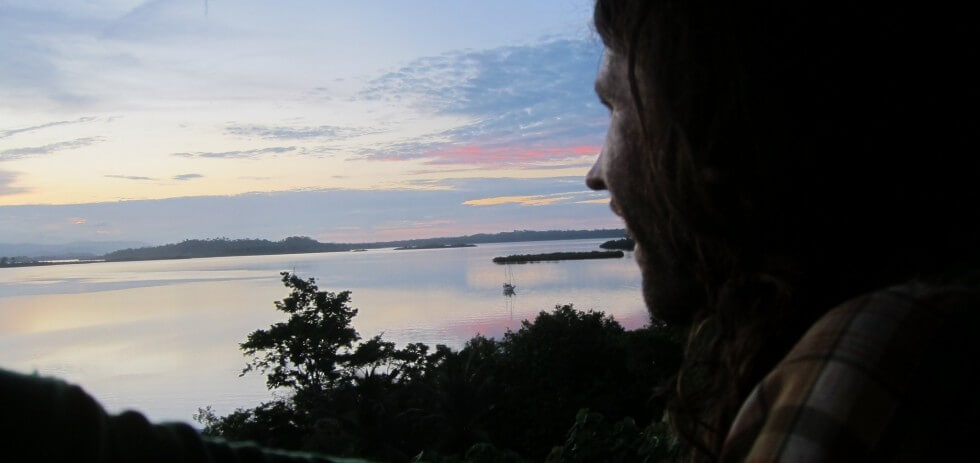
Though I have asked nearly everyone i’ve met if they are interested in writing a guest post, my brother Ossian (our most recent visitor) is the first to take the bait. The guy who sells us chayote, zapallo and other produce said “tal vez, proxima semana, por favor paga por sus verduras y dejame en paz” so maybe I will still get another taker.
I figured the rainforests of panama would probably have some kind of tropical frogs, but I had no idea that the Bocas del Toro region is actually world famous as an unparalleled hotbed of poison dart frog diversity. Copy and paste this link for a guide to the morphs:
www.tropical-experience.nl/index.php?option=com_content&view=article&id=23&Itemid=46&lang=en
All of this basically revolves around one species, the ‘strawberry poison dart frog’ or oophaga pumilio. Until recently this frog was grouped with other poison dart frogs in the dendrobates genus, but it was discovered that the oophagas have a unique way of feeding and raising their young, as the only food the tadpoles can eat is unfertilized eggs that their mother delivers to them every two or three days in the bromeliads or other water holding vegetation which she deposited them in. Anyway, o. pumilio exists in an array of distinct color morphs throughout the bocas region, often isolated on an island to island basis but sometimes with distinct color patterns living side by side on the mainland.
[wpgmappity id=”58″]
This is the Isla Popa morph, the smallest of the pumilios and on a fairly remote and uncontacted island.
As juveniles this morph is this striking metallic gold color
This is the Darklands morph, spread over a huge part of the mainland. The pizza restaurant ‘Rana Azul’ where this was taken was named for these frogs.
This red and blue variation is generally called the ‘blue jeans’ morph. Oddly enough they live on the mainland with the Darklands version but only in rare locations.
Pictured here is the larger and more common dendrobates auratus, different color morphs of this frog do exist, but not in the Bocas area. The tube this frog is sitting on is a tiny bee hive and it was eating the bees as they went about their business.
This colostethus talamancae or Talamanca Rocket Frog is included in the poison dart family although it lacks both toxins and bright colors.
Finally this much larger frog is called a Bolivian White Lipped Frog. It is the only nocturnal species pictured here and is eaten by the natives. They can be found nightly under the steps at the house here, and a huge chorus of them can be heard on wet nights.
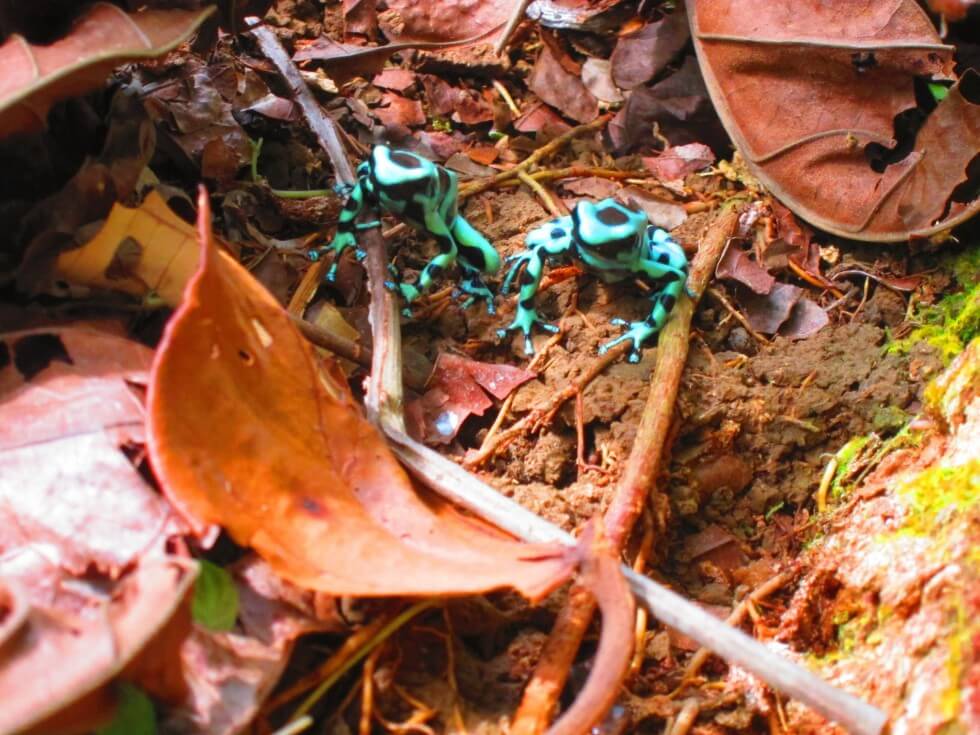
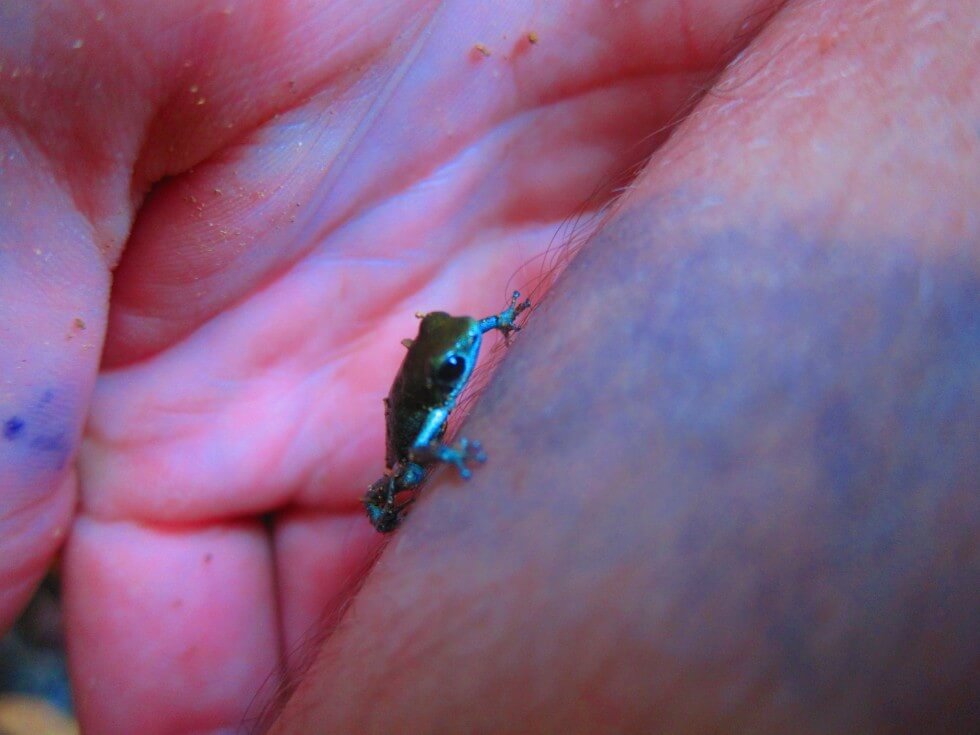
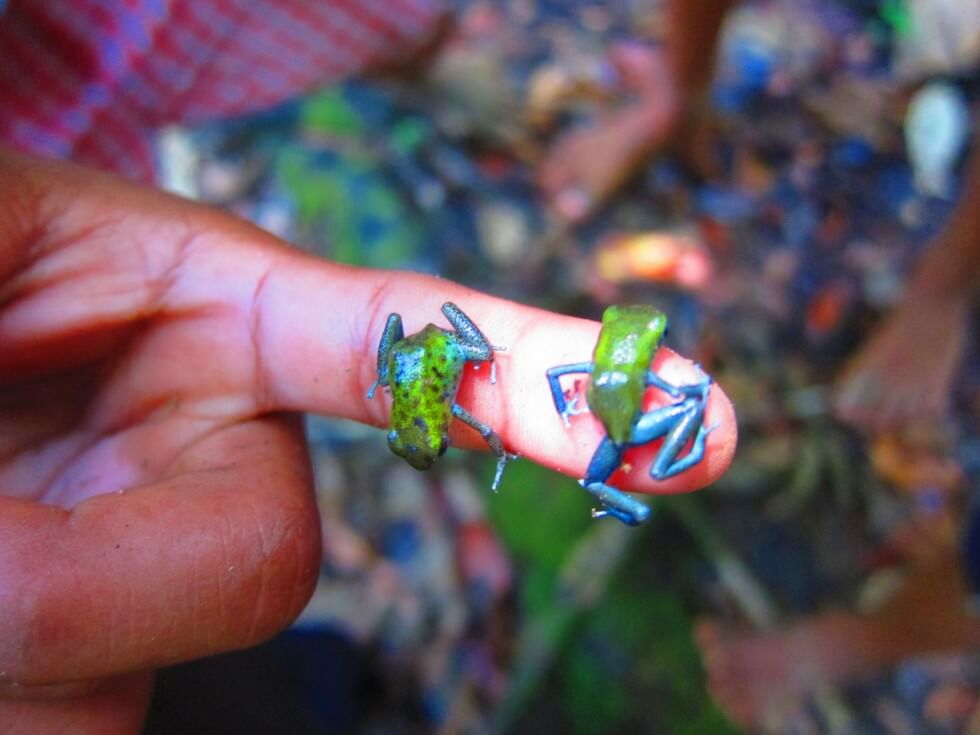

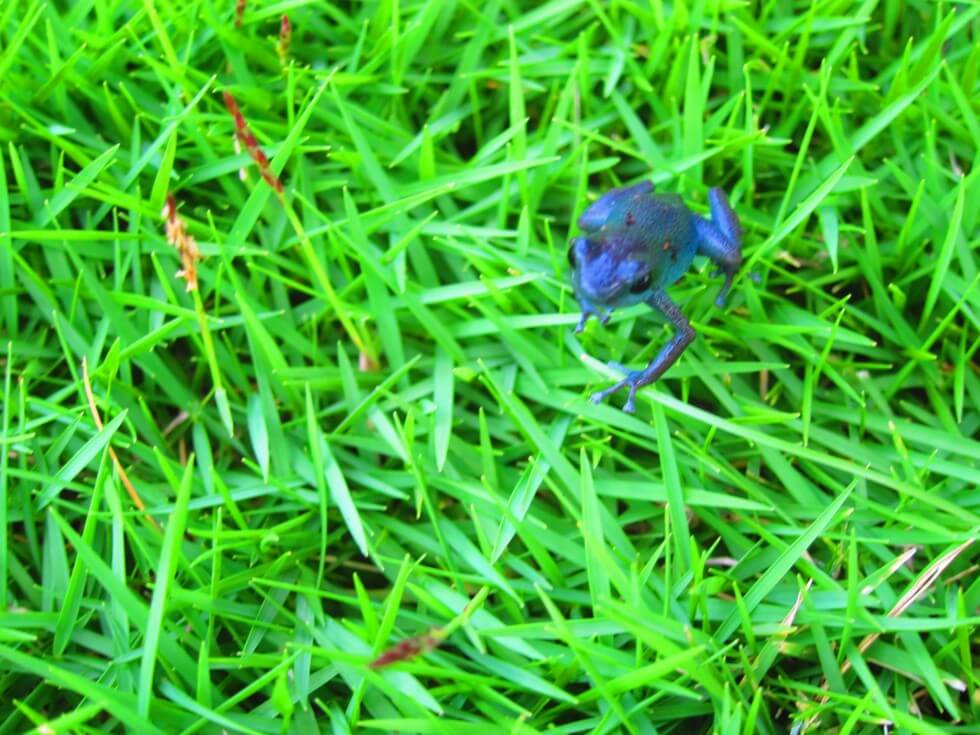

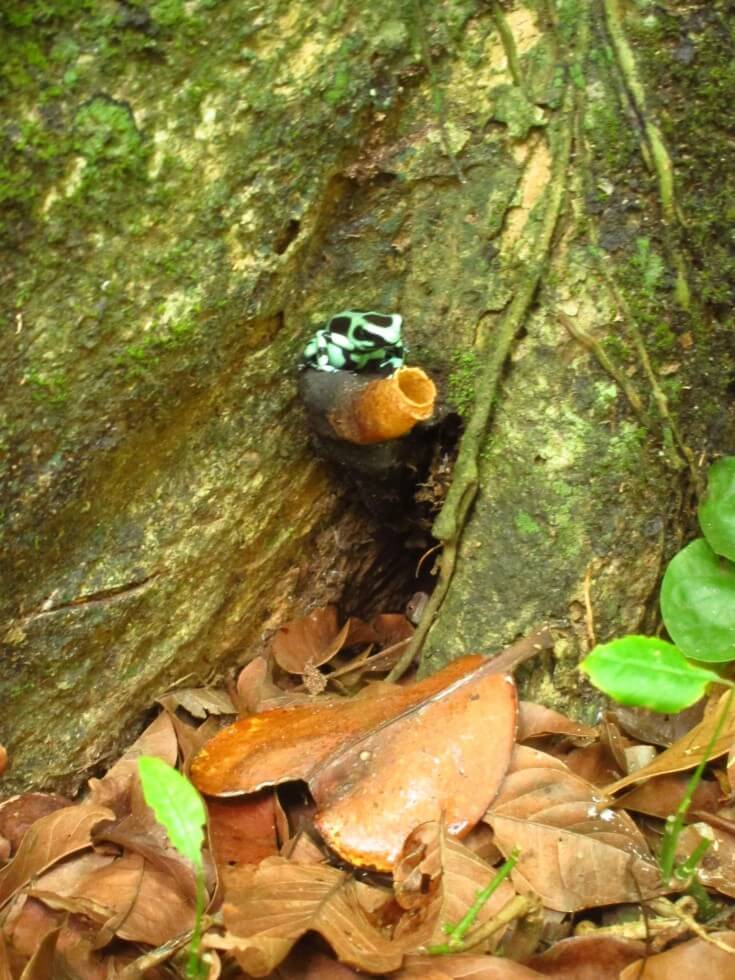
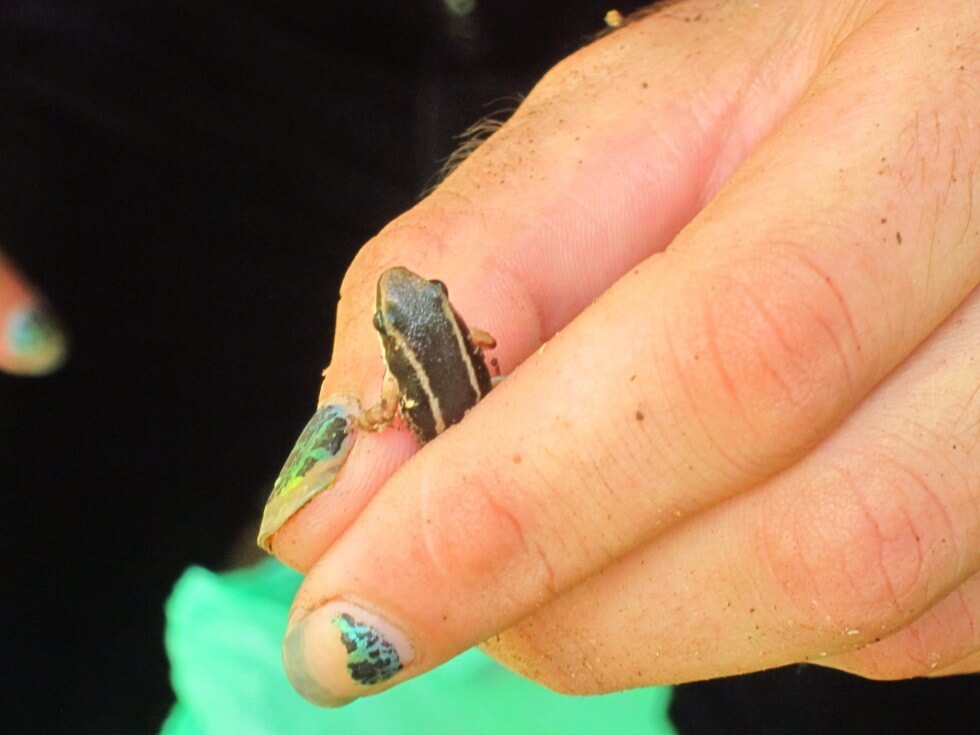
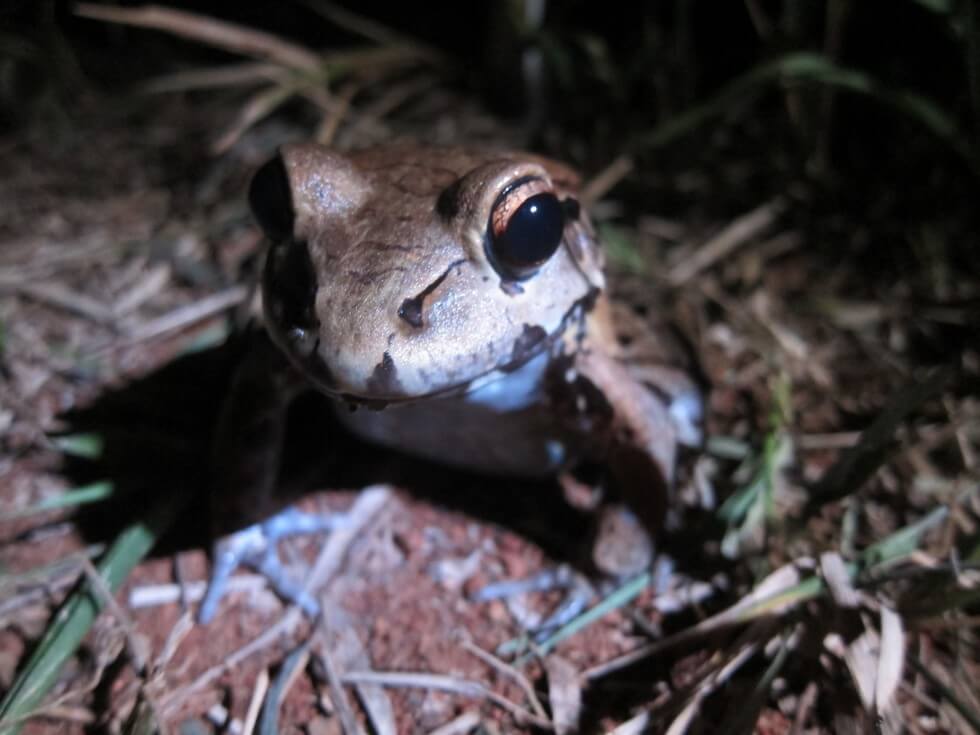
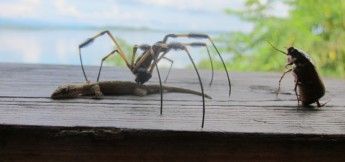
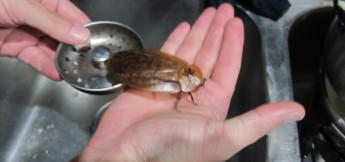
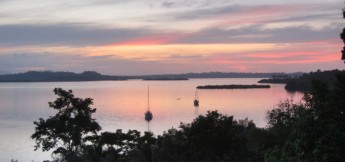



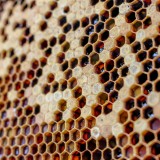
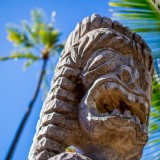
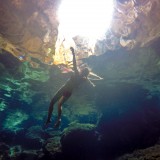
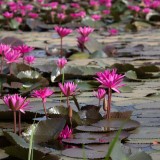

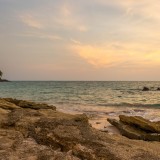



LOVE your frog pix!!!
Ossian, your post was GREAT! I particularly love that your nail polish matches the frogs! I’m so jealous you got to go visit…
Jenny and Tom, I totally miss your posts. Even if you think you’re living a boring old life of just staying in one place, just show me pictures of bugs and the restaurants you go to like the “Rana Azul’- they make my day.
Love love love,
Rebeca